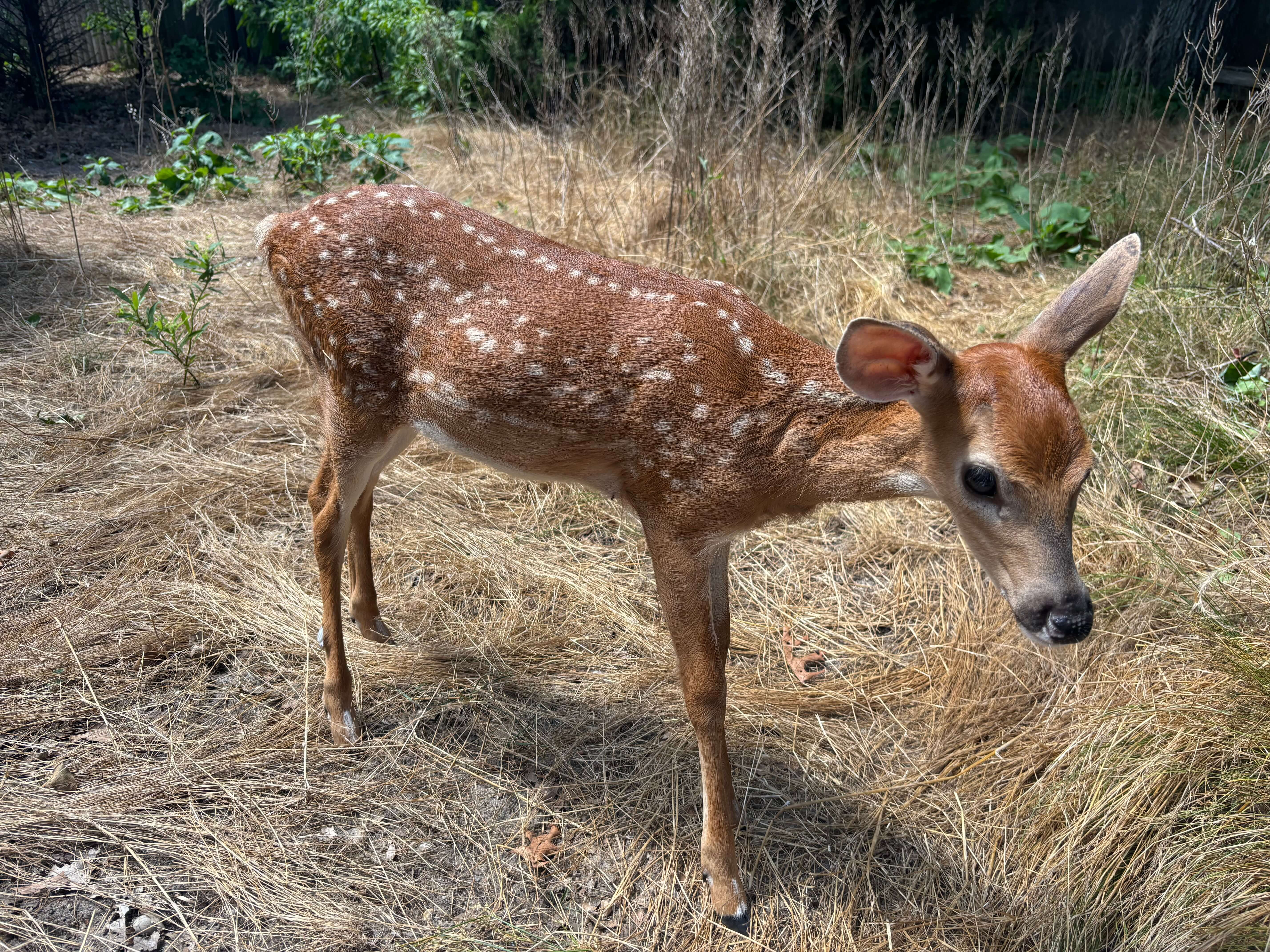Evelyn Alexander Wildlife: Rehabilitation of White-Tailed Deer

As one of the only animal hospitals on Long Island that can rehabilitate white-tailed deer, the Evelyn Alexander Wildlife Rescue Center (EAWRC) receives an influx of deer every spring and summer, and employees work overtime to ensure successful rehabilitations. With three deer currently in their outside enclosure, all healthy and growing steadily, the EAWRC is waiting for September 15 to arrive, so that the deer can be released.
Adrienne Gillespie, EAWRC hospital supervisor, states that “fawns often come in April and leave by September 15 — by New York State regulation — while large deer are only allowed to be kept at the center for 7 days.” Yet, these furry friends tend to hang out on EAWRC property for over a couple months into the fall before venturing off on their own.
Animal care assistant of the EAWRC, Rose Lynch, further explains that “when deer arrive, it is usually one of two reasons: injury or kidnapping.” Injury is common with both adults and baby deer, including “injuries from ticks, eye infections, lump abscess, heat induced diarrhea, maggot infections, car accidents, and dog or fox attacks,” Lynch adds. The most common injuries of these are injuries from maggots and ticks, which skyrocket during the summer.
With ticks at an all time high this season, littering the plants that deer often eat, Lynch explains that deer are extremely prone to having their eyes and ears continuously attacked and latched onto by ticks. In addition to that, deer are extremely fragile and have “delicate bodily systems,” she states. Their fragility makes their digestive system extremely reactive to the summer heat, slowing it down and causing excessive diarrhea. The waste attracts flies which lay their eggs on the hind legs of deer, allowing maggots to eat through the deer’s flesh and lead to fatal infections.
Another common injury that the EAWRC finds is broken legs. Gillespie suggests that “when finding a deer with one broken leg, leave it alone.” She explains that “unlike most broken bone injuries, deer can survive on three legs. Deer can run, jump, and breed on three legs, but if the deer is called in, it is otherwise forcibly euthanized.” Leaving the deer to the forces of nature can raise its chances of survival, which is what the EAWRC recommends if that is the only injury present.
Lynch describes the other, major reason deer are brought to the Evelyn Alexander Wildlife Rescue Center, and an easily preventable one too, is kidnapping. Involving only baby deer, the kidnapping of fawns is a common mistake that people make too often. Unbeknown to most, since deer are at the bottom of the food chain, like rabbits, the mother will often leave her baby for most of the day. The mother deer will “park” her fawn in a place she finds safe, coming back at only feeding times. People find these lone fawns and believe they have been abandoned, bringing them to the EAWRC.
This can be problematic for a couple different reasons. The first being that people approach fawns because they aren’t moving, however it isn’t because they aren’t scared. Gillespie explains it is quite the opposite, and that “baby deer, when scared, freeze and start hyperventilating. They can die from cardiomyopathy or capture myopathy, and bleed internally from additional stress induced.”
The fragility of deer makes it difficult to raise them in care, which is why the EAWRC highly suggests leaving fawns alone unless they have a clear injury.
The other problematic reason includes the mother of the fawn. Mothers can be so heartbroken from the sudden disappearance of their baby fawn that they will die from stress and grief. Gillespie states that “if the fawn cannot be transported to the original location it was found, and it has not been that long since the fawn was picked up, the EAWRC will try and send a healthy fawn to replace the one that’s been lost.”
Surprisingly enough, mothers will adopt another fawn that is not her own if it was found in a close location, saving the life of both the mother, and the baby fawn, as “a mother will always take better care of their fawn than any rehabilitation center will,” Gillespie adds.
Despite the fragility and difficulty in the rehabilitation process of deer, with formula, antibiotics, and pain medications, the employees of the EARWC have successfully saved countless deer and released them back into the wild. Yet, the center stresses that lone baby deer should not be brought in unless there is a clear injury, as it promotes more attention to deer that have fatal injuries, and saves the life of both that fawn, and its mother.
The center is located at 228 West Montauk Highway, Hampton Bays. It can be reached at 631-728-4200, and animal emergencies can be reported at 631-728-WILD (9453). The center is open 9 a.m.–5 p.m. seven days weekly. Visit wildliferescuecenter.org for info.



